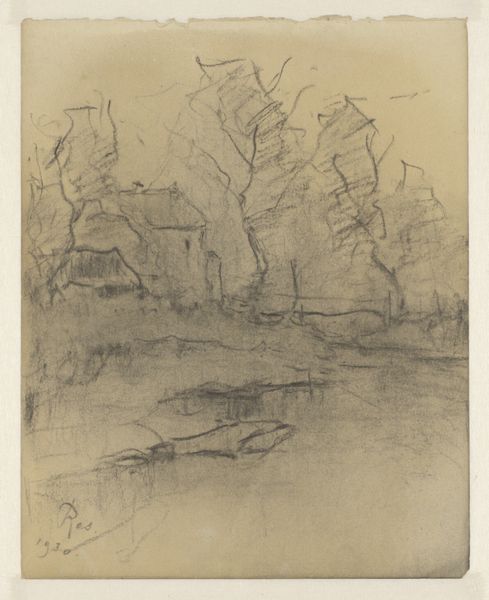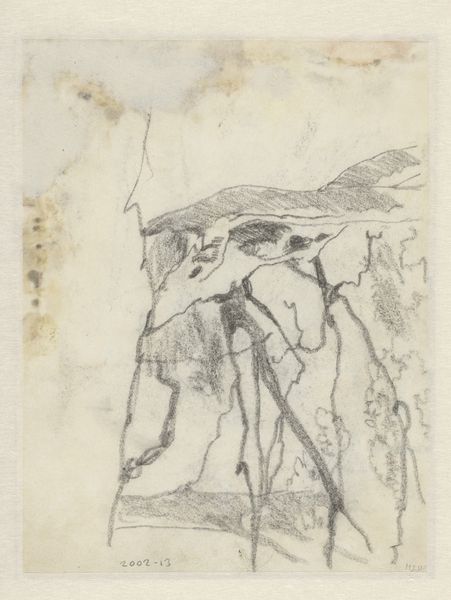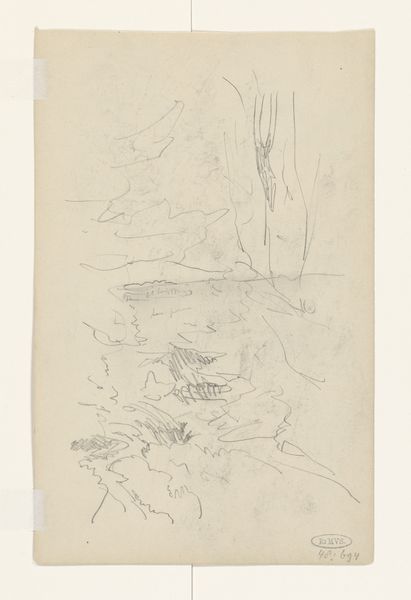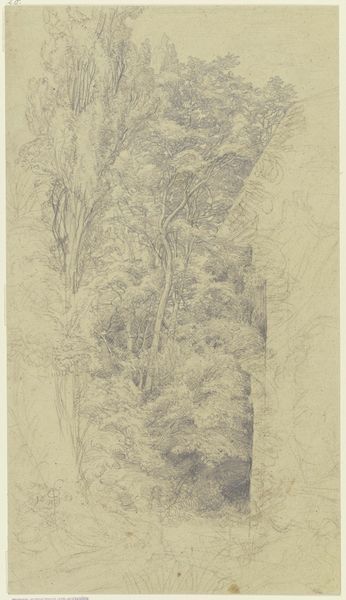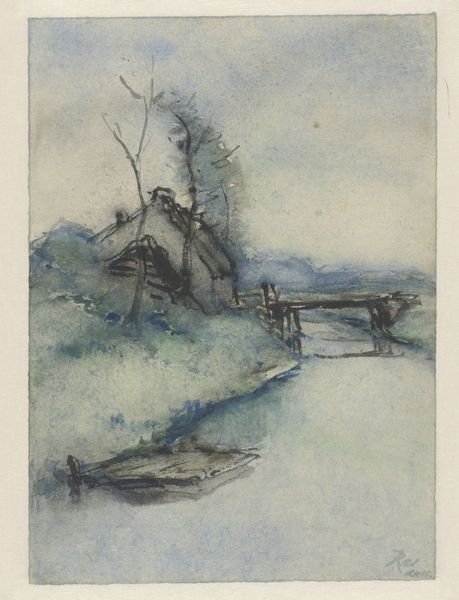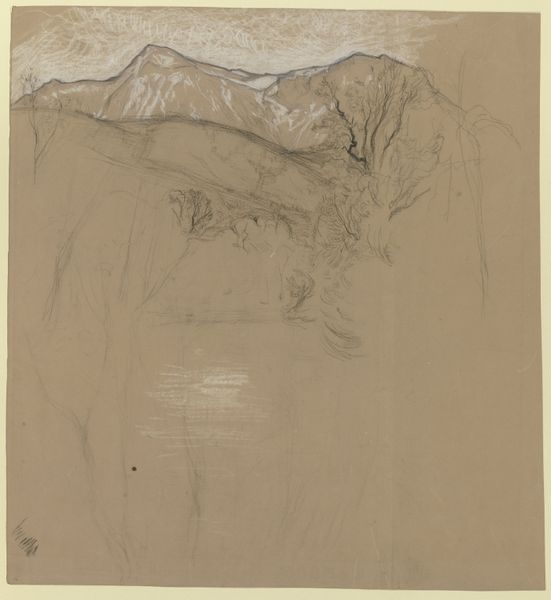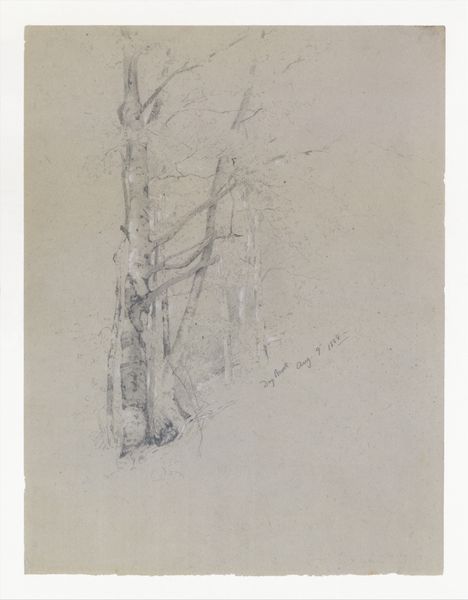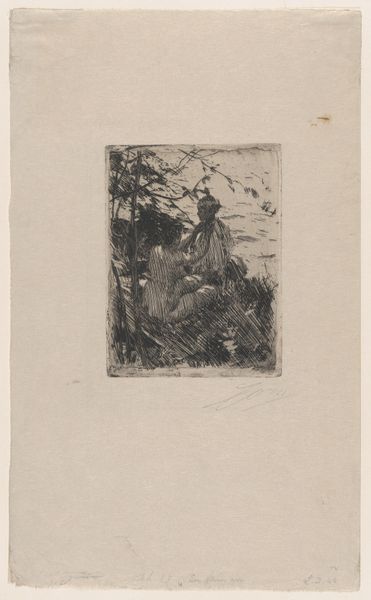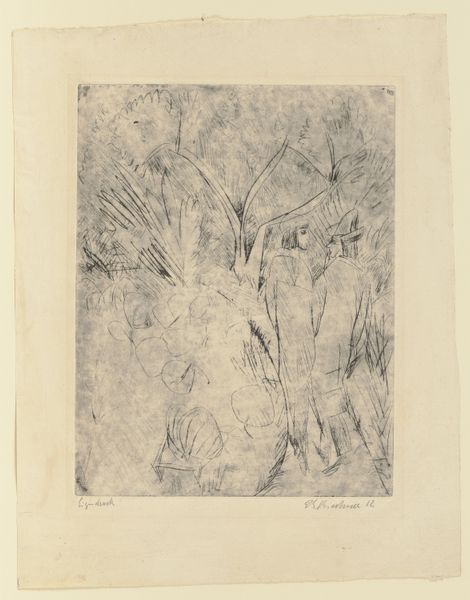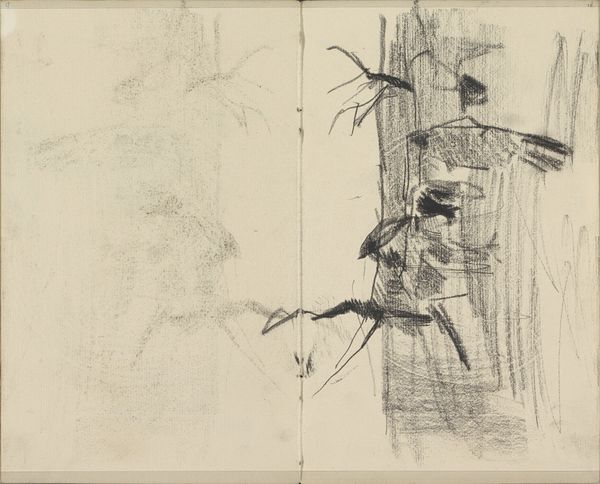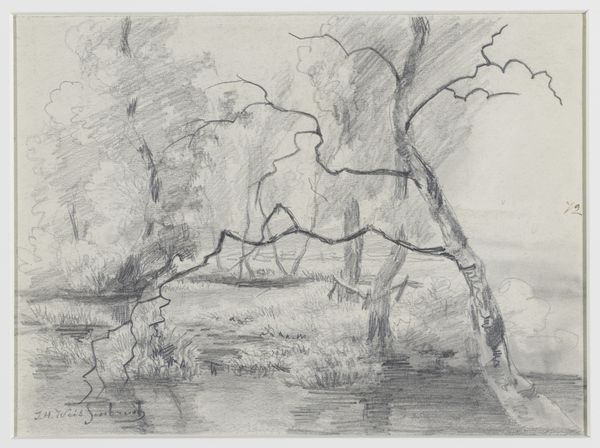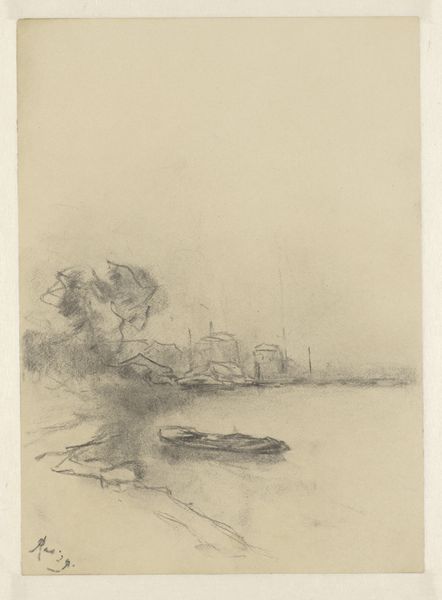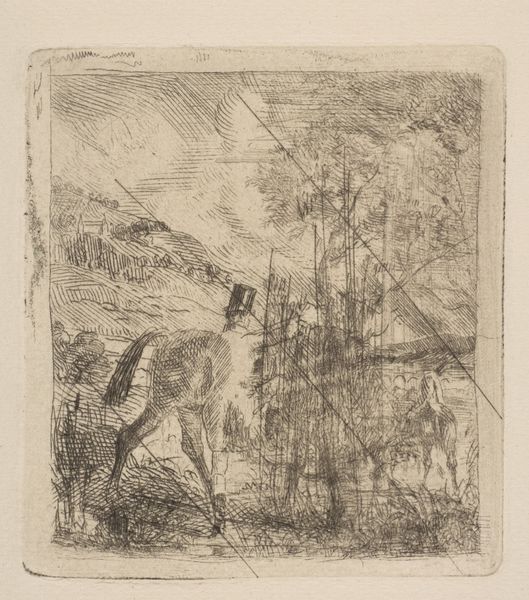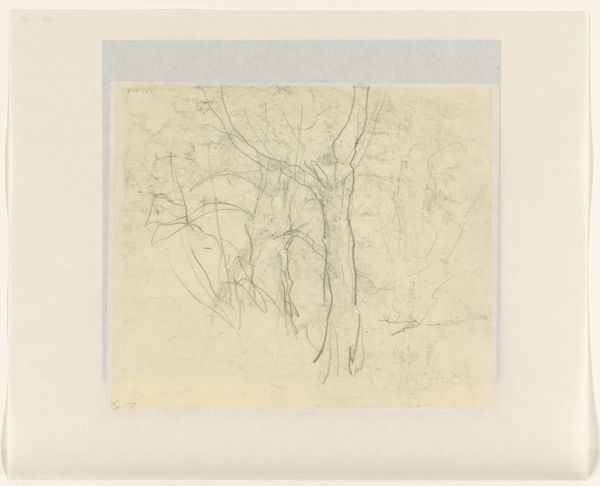
drawing, paper, pencil
#
drawing
#
landscape
#
paper
#
pencil
Dimensions: height 340 mm, width 245 mm
Copyright: Rijks Museum: Open Domain
Editor: Here we have "Tree and Fence by the Water's Edge," a landscape drawing rendered in pencil on paper by Pieter Ras, from 1929. The composition has this hazy, almost dreamlike quality to it. What catches your eye in this piece? Curator: Immediately, I’m drawn to the humble materials: paper and pencil. In 1929, many artists experimented with mass-produced materials. This readily available paper stock and common graphite allowed Ras to sketch prolifically, almost like a form of documentation or a readily available material for generating more developed compositions. Think about where he would acquire the tools needed to create this sketch. It’s not rarefied materials here; what sort of art worker are we encountering in the Dutch landscape of this period? Editor: So you're saying that the accessibility of these materials situates Ras in a particular class position, making art accessible in everyday life. Does that take away from its artistic merit at all? Curator: Absolutely not. The means of production – the very act of drawing with such accessible tools - democratizes the artistic process. It challenges the traditional hierarchies separating “high art” from everyday labor and consumption. He seems to find art where he lives. I would argue, rather than diminishing its artistic worth, it enriches the social meaning behind this work. It points to an artist embedded in the realities of his time. I see an artist looking outward. What do you make of the way he renders his landscape? Editor: It makes sense now. He's engaging in this tradition of landscape, but simultaneously signaling towards his current social environment. Thank you; that’s a new way of thinking about drawings like these for me. Curator: And it points us toward how much work it took to generate these subtle variations across the image field. There's a relationship between artist, material and his historical milieu. That's how to unlock such art for all its meaning.
Comments
No comments
Be the first to comment and join the conversation on the ultimate creative platform.
